“Bento,” or lunch boxes, are an integral part of Japanese culinary culture.
One can frequently see Japanese students carrying bento to school for lunch. But have you ever wondered:
Why do Japanese people enjoy eating bento so much, even when it’s cold? Why not eat it hot for better flavor? And how do bento not spoil by lunchtime?
Bento Becomes a Cultural Phenomenon
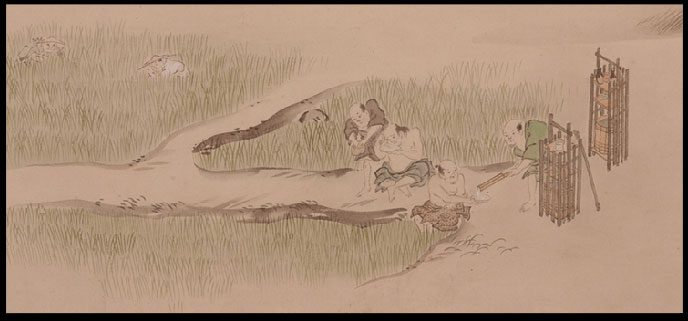
A scene of a farmer eating bento from the “Picture Book of Cultivation” during the Edo period.
Bento in Japan refers to a handcrafted meal box.
The earliest bento in Japan can be traced back to rice balls (onigiri) during the Yayoi period (around 300 BC to 250). In the “Chronicles of Japan”, it is recorded that people would place rice balls in boxes to eat while working outside, which can be regarded as a prototype of contemporary bento.
For a long time after, bento was primarily used as rations for soldiers or workers in mountainous and coastal areas.
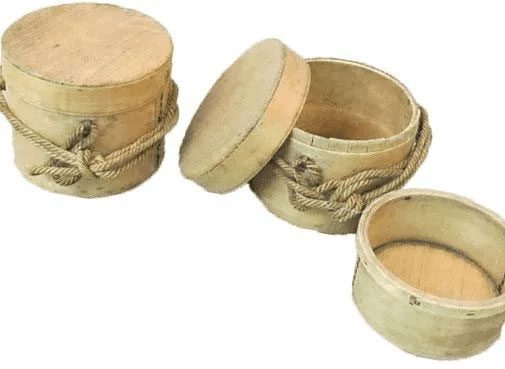
A bento box from fishermen displayed at the Takaoka City Museum in Toyama Prefecture, Japan.
Japan is surrounded by the sea and rich in marine resources, and many Japanese people earn their living through fishing. The concept of “sea bento” emerged, with lunch boxes made from cedar wood that could absorb just the right amount of moisture, keeping the rice soft and tasty. The lunch box typically consists of two tiers: one for rice and another for a shallow bowl of various dishes (such as fish soup or fried fish).
Even more fascinating, the box of this sea bento was a “multi-functional” container. Generally, it was used as a lunch box for fishermen, but if the boat leaked, it could also serve as a scoop for water, functioning as a life buoy.
The true popularity of bento can be traced back to the daily activities of the aristocrats during the Heian period. They would go out for leisure, flower viewing, and other artistic activities, with high-end bento being the optimal choice when they felt hungry.
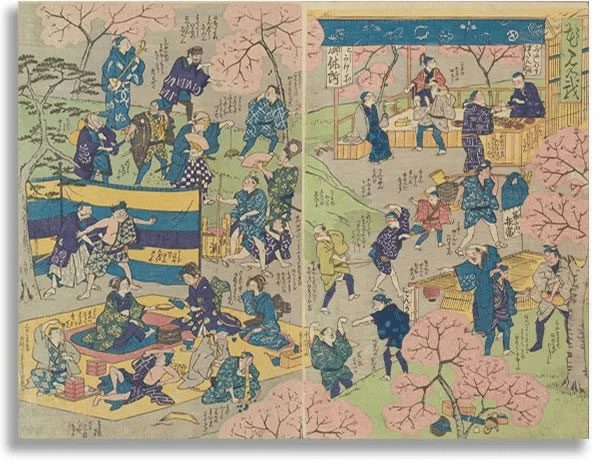
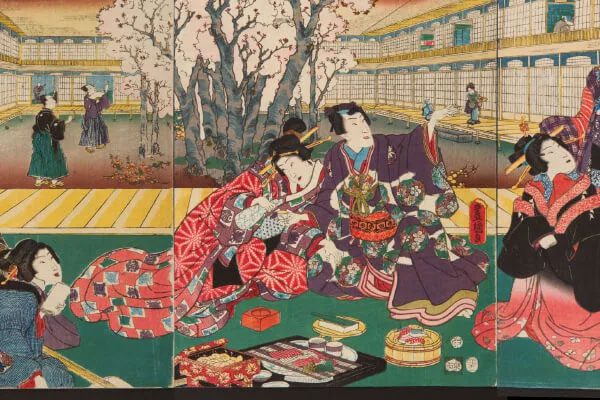
The culture of enjoying bento while viewing cherry blossoms among ancient Japanese nobility.
Over time, even ordinary people grew dissatisfied with merely eating rice balls and pickles as a “working meal” and began to appreciate bento while enjoying flowers in a more refined manner.
Thanks to the continuous efforts of individuals from various social classes, by the end of the Edo period, bento had become quite luxurious, evolving from a mere combination of rice and pickles to a more sophisticated version. A luxurious bento box would include side dishes. The hanami bento (lunch box enjoyed during cherry blossom season) is typically divided into upper, middle, and lower tiers, featuring everything from boiled lotus root, burdock, chicken cake, and side dishes to luxurious items like shrimp and sea bream or sashimi.
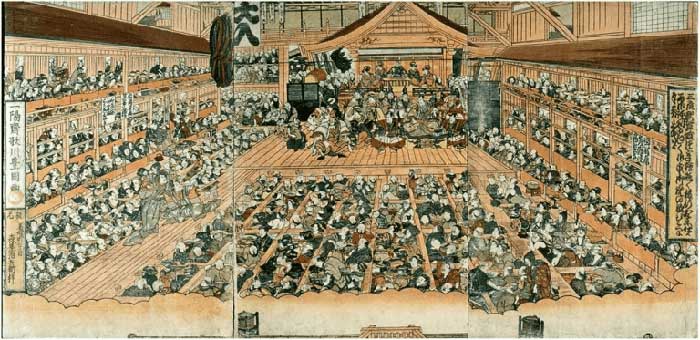
A theater performance during the Edo period.
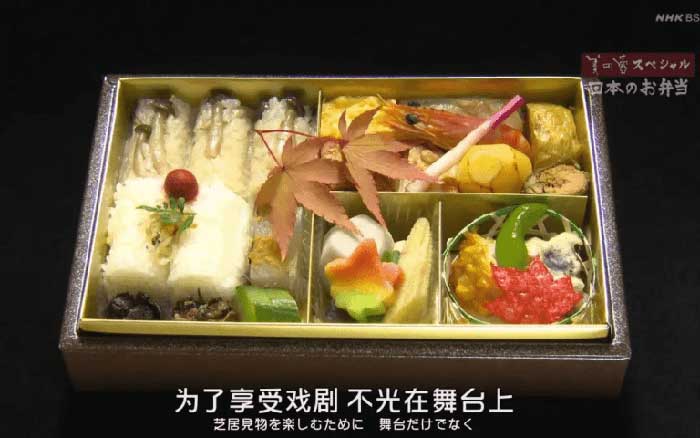
A simulation of bento at a theater during the Edo period.
Theatrical performances during the Edo period often lasted from 6 AM to 5 PM, essentially comprising three meals a day. Eating bento between performances became quite trendy. What delighted the audience was not only the excellent play but also the delicious bento.
During this time, bento expanded from “on-demand eating” to “ceremonial dining,” allowing people to enjoy tasty dishes while also being visually appealing, thus becoming a part of Japanese culinary culture.
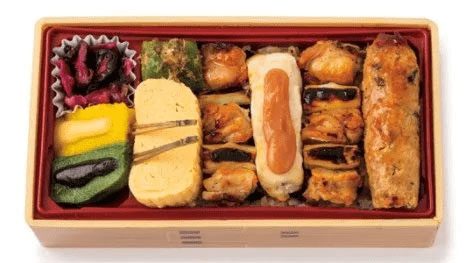
Train bento.
After the war, Japan’s economy rapidly developed. By the 1970s, train bento became one of the key promotional activities for Japan’s tourism industry.
Many dining establishments began to emerge, providing Japanese people with increasingly diverse meal options. Even in an era dominated by fast food, the excitement of Japanese people for “handmade bento” has not diminished. To meet public demand, convenience stores, restaurants, and large food companies have also developed and designed various bento styles to cater to different needs.
We all know that the Japanese are famous for their strong work culture. Students and office workers eat bento to save precious little lunch break time without having to wait in line at cafeterias or rice shops.
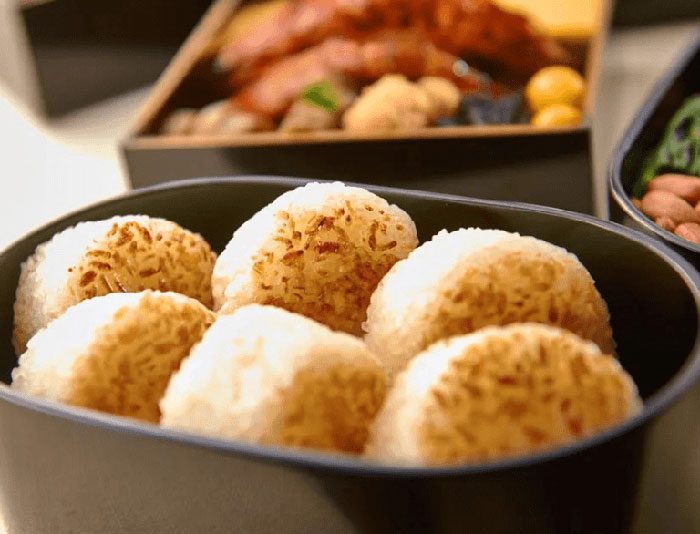
Just grilled rice balls can also be bento.
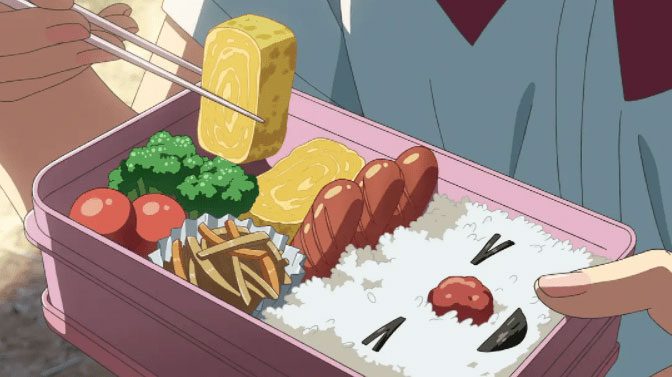
Bento featured in Japanese anime.
Moreover, lunchtime bento has become a precious moment for Japanese people to connect with one another. This is especially evident in school settings, where everyone eagerly awaits to see what their peers will bring, how it is decorated, and sometimes even share bites to enjoy the flavors together.
Throughout various types of Japanese animation and television series over the years, the bento lunch box has been a catalyst for warming the characters’ emotions, containing love and care. A bento box that is both visually appealing and delicious conveys the sentiments of the cook. Each dish inside holds both dedication and simple everyday stories.
Why Do Japanese People Eat Cold Bento?
For the Japanese, bento represents a comprehensive and fascinating culinary culture. Whether at school, in the office, at the theater, train stations, airports, or while admiring the vibrant cherry blossoms and the beautiful moonlight, bento plays a vital role in creating wonderful memories for the Japanese.
The majority of bento in Japan is eaten cold, which can be considered the most significant difference in lunch box culture worldwide.
Some culinary researchers suggest that this is primarily because Japanese rice is sticky and delicious even when cold. Furthermore, the side dishes prepared in traditional Japanese bento are low in oil and seasoning, vibrant in color, making them less likely to spoil, and if heated, they lose their visual appeal. As a result, the Japanese have become accustomed to eating cold bento for both flavor and aesthetics.
Additionally, Japanese people enjoy eating cold and raw foods, such as sushi, pickles, and sashimi… Therefore, eating bento without reheating is quite normal for the Japanese.
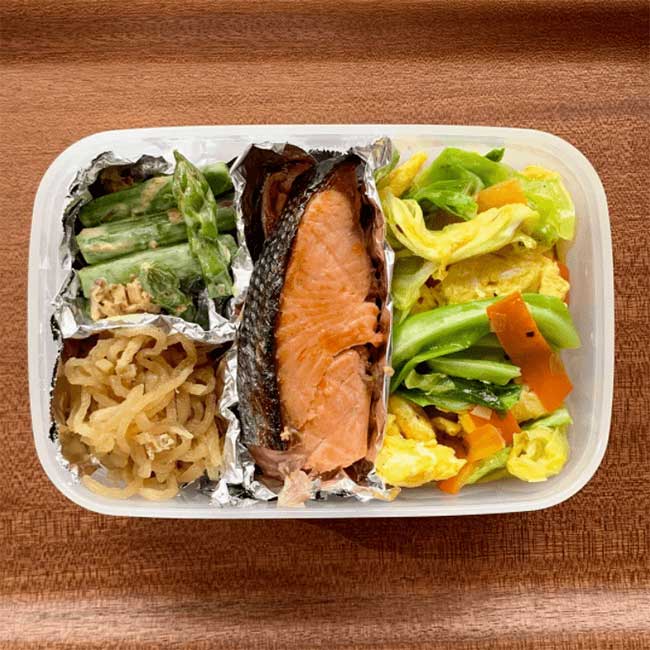
A nutritious bento box.
Preparing an exquisite bento box requires significant effort; if the “preparation method” is not followed correctly, the flavor will be affected, and the food may spoil by lunchtime. Here are four habits in the cooking and consumption of bento by the Japanese:
1. Wash ingredients thoroughly before cooking. From the ingredients used for bento to the hands that cook and the bento box itself, everything must be meticulously cleaned.
2. Fully cook food. Although many Japanese enjoy raw foods, boiled eggs or salads are also favorites. However, in the summer, items in the bento need to be fully cooked to prevent bacteria from growing in raw foods.
3. Separate food items.
Separating dishes is key to making Japanese-style bento, making it both visually appealing and preventing flavors from blending together. Nowadays, even when buying a bento from a convenience store, you can still see that side dishes and rice are often sold separately.
It is also advisable to cool the rice and other side dishes in the bento before placing them into the box to avoid moisture buildup.
4. Avoid light and heat.
This is a point that many people may overlook; most people’s lunch bags are just regular bags. However, during hot summer days, if traveling a long distance, the bento rice may “change flavor.” In this case, adding a small ice pack to the lunch bag is a good solution.


















































